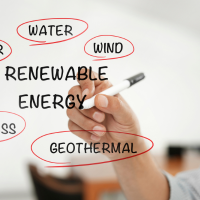The International Union for Conservation of Nature (IUCN) stands as a pivotal organization in the realm of global environmental governance. Established in 1948, IUCN is the world’s first global environmental organization, bringing together governments, civil society, scientists, and local communities to address pressing environmental issues. With its headquarters in Gland, Switzerland, the IUCN operates through a network of over 1,400 member organizations, including states, government agencies, NGOs, and indigenous peoples’ organizations.
This diverse membership base allows IUCN to leverage a wealth of knowledge and expertise, making it a formidable force in the conservation landscape. IUCN’s influence extends beyond mere advocacy; it plays a crucial role in shaping international environmental policies and agreements. The organization is perhaps best known for its Red List of Threatened Species, which serves as a critical indicator of the health of the world’s biodiversity.
By providing a comprehensive assessment of species’ conservation status, the IUCN helps inform conservation priorities and strategies globally. As environmental challenges continue to escalate, the IUCN’s role in fostering collaboration and innovation in conservation efforts becomes increasingly vital.
The IUCN’s mission and goals for conservation and sustainability
At the heart of the IUCN’s work lies its mission to influence, encourage, and assist societies throughout the world to conserve the integrity and diversity of nature. The organization aims to promote sustainable development through sound environmental practices. This mission is underpinned by a commitment to ensuring that human well-being is intrinsically linked to the health of ecosystems.
The IUCN recognizes that biodiversity is not merely an environmental concern but a fundamental component of social and economic stability. To achieve its goals, the IUCN has established several strategic objectives that guide its initiatives. These include promoting nature-based solutions to global challenges such as climate change, enhancing the resilience of ecosystems and communities, and advocating for equitable governance of natural resources.
By aligning its goals with international frameworks like the Sustainable Development Goals (SDGs), the IUCN seeks to create synergies between conservation efforts and broader development agendas. This holistic approach ensures that conservation is not viewed in isolation but as an integral part of sustainable development.
Key initiatives and programs of the IUCN
The IUCN has launched numerous initiatives and programs that reflect its commitment to conservation and sustainability. One notable program is the IUCN Green List of Protected and Conserved Areas, which sets a global standard for protected area management effectiveness. This initiative encourages countries to improve their protected areas’ performance by recognizing those that meet high standards of governance, design, and management.
By highlighting successful examples, the Green List serves as a model for others to emulate, fostering a culture of excellence in conservation. Another significant initiative is the IUCN’s work on ecosystem-based adaptation (EbA). This approach integrates biodiversity and ecosystem services into climate change adaptation strategies, helping communities build resilience against climate impacts.
For instance, in regions vulnerable to flooding, restoring mangroves can provide natural barriers while also supporting local fisheries. The IUCN collaborates with various stakeholders to implement EbA projects worldwide, demonstrating how nature can be harnessed to address climate challenges effectively.
The IUCN’s approach to addressing global environmental challenges
The IUCN adopts a multifaceted approach to tackle global environmental challenges, recognizing that these issues are interconnected and require comprehensive solutions. One key aspect of this approach is the emphasis on science-based decision-making. The organization invests heavily in research and data collection to inform its policies and programs.
By utilizing scientific evidence, the IUCN can advocate for effective conservation strategies that are grounded in reality rather than speculation. Moreover, the IUCN prioritizes capacity building among local communities and stakeholders. By empowering individuals with knowledge and skills, the organization fosters local stewardship of natural resources.
For example, through training programs and workshops, community members learn sustainable land management practices that enhance both biodiversity and their livelihoods. This participatory approach not only strengthens local capacities but also ensures that conservation efforts are culturally relevant and socially acceptable.
Collaborations and partnerships with other organizations and stakeholders
Collaboration is a cornerstone of the IUCN’s strategy for achieving its conservation goals. The organization actively seeks partnerships with a wide range of stakeholders, including governments, NGOs, academic institutions, and private sector entities. These collaborations enable the sharing of resources, expertise, and best practices, amplifying the impact of conservation initiatives.
For instance, the IUCN has partnered with organizations like WWF and Conservation International on various projects aimed at protecting critical habitats and endangered species. One exemplary collaboration is the Global Biodiversity Framework (GBF), which brings together multiple stakeholders to address biodiversity loss on a global scale. Through this initiative, the IUCN works alongside governments and civil society organizations to develop actionable targets for biodiversity conservation.
By fostering dialogue among diverse actors, the GBF aims to create a unified response to one of the most pressing challenges facing our planet today.
The IUCN’s vision for a sustainable future and its impact on global conservation efforts
Looking ahead, the IUCN envisions a world where people live in harmony with nature—a future where biodiversity thrives alongside human development. This vision is not merely aspirational; it is grounded in a belief that sustainable development is achievable through concerted efforts at all levels of society. The IUCN advocates for policies that prioritize ecological integrity while also addressing social equity and economic viability.
The impact of the IUCN’s work on global conservation efforts is profound. Through its initiatives, research, and partnerships, the organization has played a crucial role in raising awareness about biodiversity loss and advocating for effective conservation measures. The IUCN’s influence extends to international negotiations on environmental treaties, where it provides critical expertise and guidance.
As nations grapple with complex environmental challenges, the IUCN remains a beacon of hope—demonstrating that through collaboration and commitment, a sustainable future is within reach. In conclusion, the International Union for Conservation of Nature stands at the forefront of global conservation efforts. Its mission to promote sustainable development through effective conservation practices resonates across borders and sectors.
By implementing key initiatives, fostering collaborations, and addressing environmental challenges holistically, the IUCN continues to make significant strides toward achieving its vision for a sustainable future. As we face an increasingly uncertain environmental landscape, the work of organizations like the IUCN becomes ever more essential in safeguarding our planet for generations to come.








































